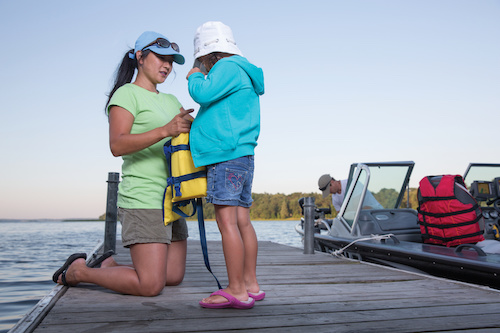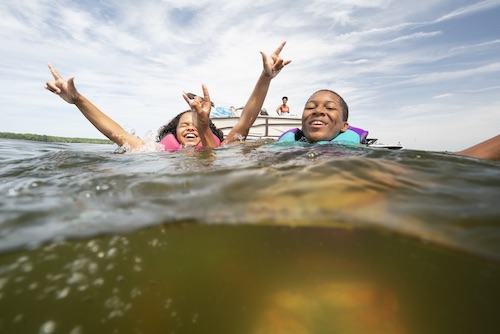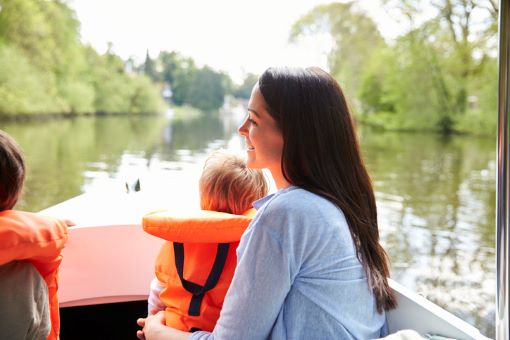Are you ready to introduce your little ones to the joys of boating? Taking the kids out on the water is a prime opportunity for unforgettable family memories. But every parent knows it requires proper planning and preparation.
Thankfully, today's blog post serves as your guide to boating with kids. From what to bring to essential safety tips, we're covering it all below.

7 Tips for Boating with Kids Safely
Ready to take your little ones out on the water? Here are 10 safety tips for boating with kids.
1. Life Jackets are Non-Negotiable
You can't talk about boat safety without highlighting life jackets. And every child — regardless of their swimming ability — has to wear a Coast Guard-approved life jacket or personal floatation device (PFD).
Ensure it fits snugly – with no gaps around the neck or armholes. And if you need help testing fit, lift your child by the shoulders of the jacket. If it rides up too high, it's too big.
The Coast Guard requires all children under 13 to wear a life jacket while on board – even if the boat's anchored. Of course, life jackets are also a necessity for anyone participating in watersports like tubing or wakeboarding. And any child (regardless of age) who enters open water should also wear one.
2. Establish Clear Rules
Before leaving the dock, we recommend setting some ground rules. Ensure your kids know where they can and can't go on the boat and emphasize the importance of staying seated while the boat is in motion. It's also important to remind them not to run or jump on the boat to avoid preventable accidents.
3. Find the Right Spot
If you drop anchor, you'll want to do so in a family-friendly area. Make sure you're parked away from the channel and anywhere where there's a lot of boat traffic.
Learn more about how to plan a safe and fun boating trip with kids:
4. Teach Your Kids the Basics
We recommend teaching your kids the basics of boating before your boating adventure. Teach them how to safely enter and exit the vessel and use the swim ladder and platform (if applicable). Also, demonstrate how to hold handrails and move around the vessel when anchored.
Read Next: Complete Boating Safety Guide
5. Turn Off the Engine When Swimming
This might sound like a no-brainer, but make sure the boat's engine is stopped before anyone heads into the water. (And yes, that includes entering the water for watersports.)
Again, you'll want to confirm everyone is wearing a life jacket before heading into open water. We also recommend tossing a tow line or tube behind your boat for swimmers to grab hold of. That way, they're less likely to drift away from the boat in strong currents.
6. Pack Plenty of Snacks and Drinks
Hungry and thirsty kids are unhappy kids. Therefore, you'll want to pack various snacks, water, and juice to fuel your adventures. Opt for healthy snacks like fruits, vegetables, and whole-grain crackers, and avoid sugary drinks or snacks that'll lead to energy crashes.
7. Always Watch Your Kids on the Boat
Last but certainly not least, don't let your guard down when boating with kids. Make sure you have eyes on your kids at all times. And if you must look away for whatever reason, designate another adult to watch them on your behalf.
Boat Safety with Kids
If you follow these safety tips for boating with kids, we're confident your family adventures will be smooth sailing. Happy boating!
This article and video are sponsored by Progressive Insurance®


